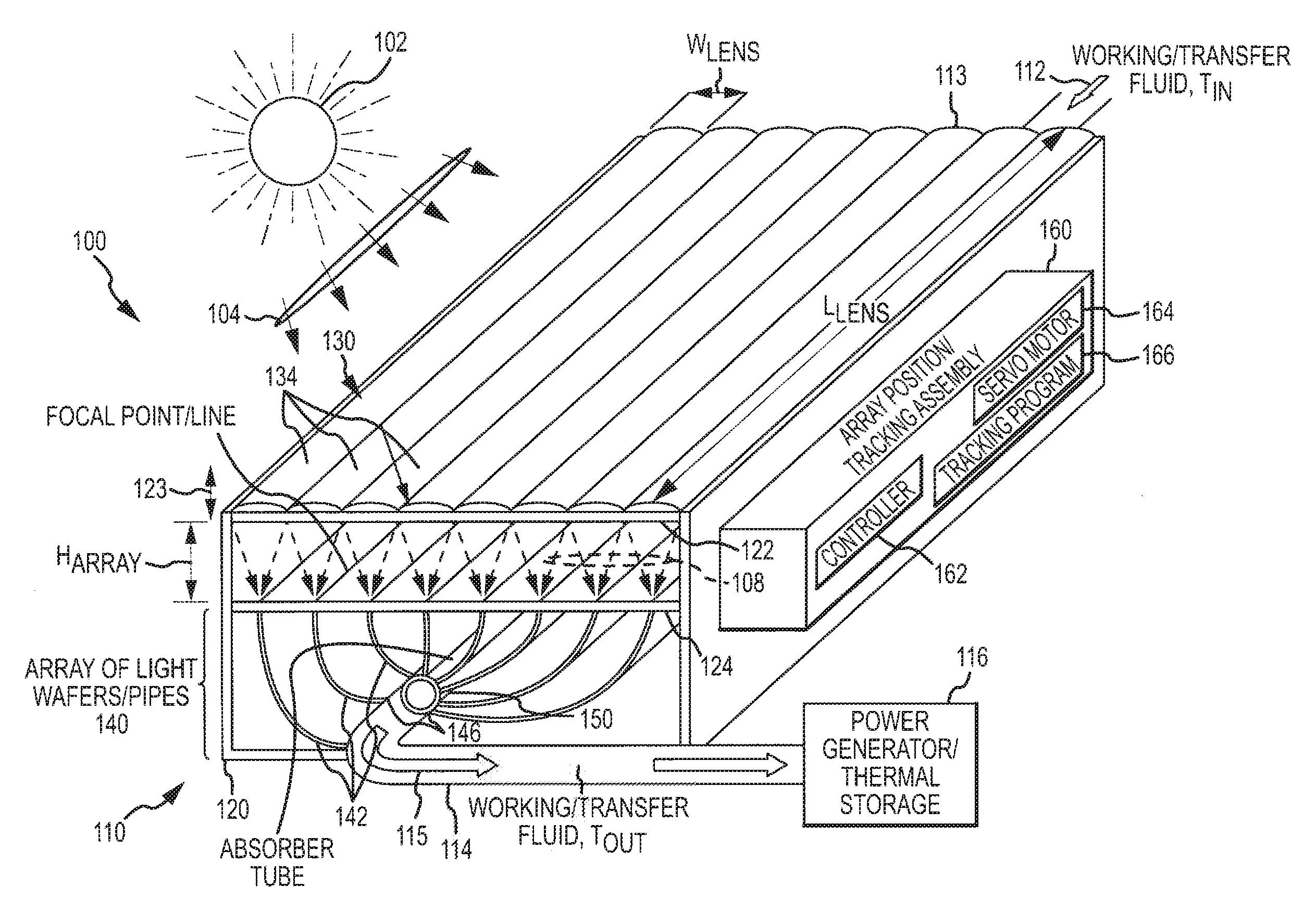Tracking Fiber Optic Wafer Concentrator
a technology of fiber optic wafers and concentrators, which is applied in the field of concentrators, can solve the problems of reducing efficiency, reducing efficiency, and high associated manufacturing and maintenance costs, and requiring a great deal of maintenan
- Summary
- Abstract
- Description
- Claims
- Application Information
AI Technical Summary
Benefits of technology
Problems solved by technology
Method used
Image
Examples
Embodiment Construction
[0031]The present invention is generally directed toward new concentrators or collectors for more effectively collecting solar energy throughout the day and over two or more seasons. FIG. 1 illustrates schematically (or in functional block form) a concentrated solar power (CSP) system 100 of one embodiment. As shown, the CSP system 100 includes a concentrator or collector assembly 110 that combines a lens array with a set or array of light wafers, and the concentrator assembly 110 may be tracking and / or have the lens array be adjustable to adjust for daily and / or seasonal changes in the position of the Sun 102.
[0032]Briefly, the CSP system 100 includes the concentrator assembly 110 that includes a housing 120 in which a lens frame or support 122 is provided near an upper opening. The housing 120 also includes a wafer support or plate 124 that is typically rigidly mounted in the housing 120 and supports a first or receiving end 144 of a plurality of light wafers or pipes 142 (e.g., a...
PUM
 Login to View More
Login to View More Abstract
Description
Claims
Application Information
 Login to View More
Login to View More - R&D
- Intellectual Property
- Life Sciences
- Materials
- Tech Scout
- Unparalleled Data Quality
- Higher Quality Content
- 60% Fewer Hallucinations
Browse by: Latest US Patents, China's latest patents, Technical Efficacy Thesaurus, Application Domain, Technology Topic, Popular Technical Reports.
© 2025 PatSnap. All rights reserved.Legal|Privacy policy|Modern Slavery Act Transparency Statement|Sitemap|About US| Contact US: help@patsnap.com



